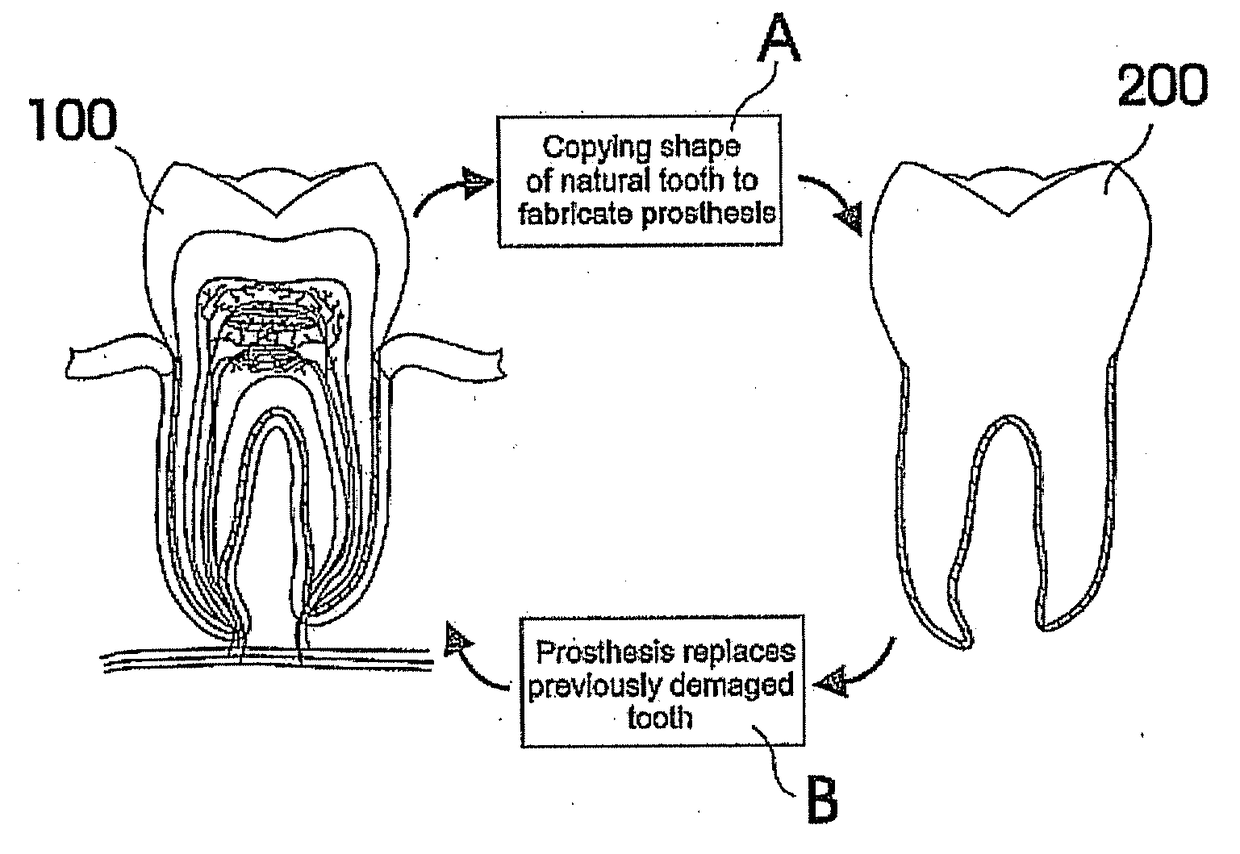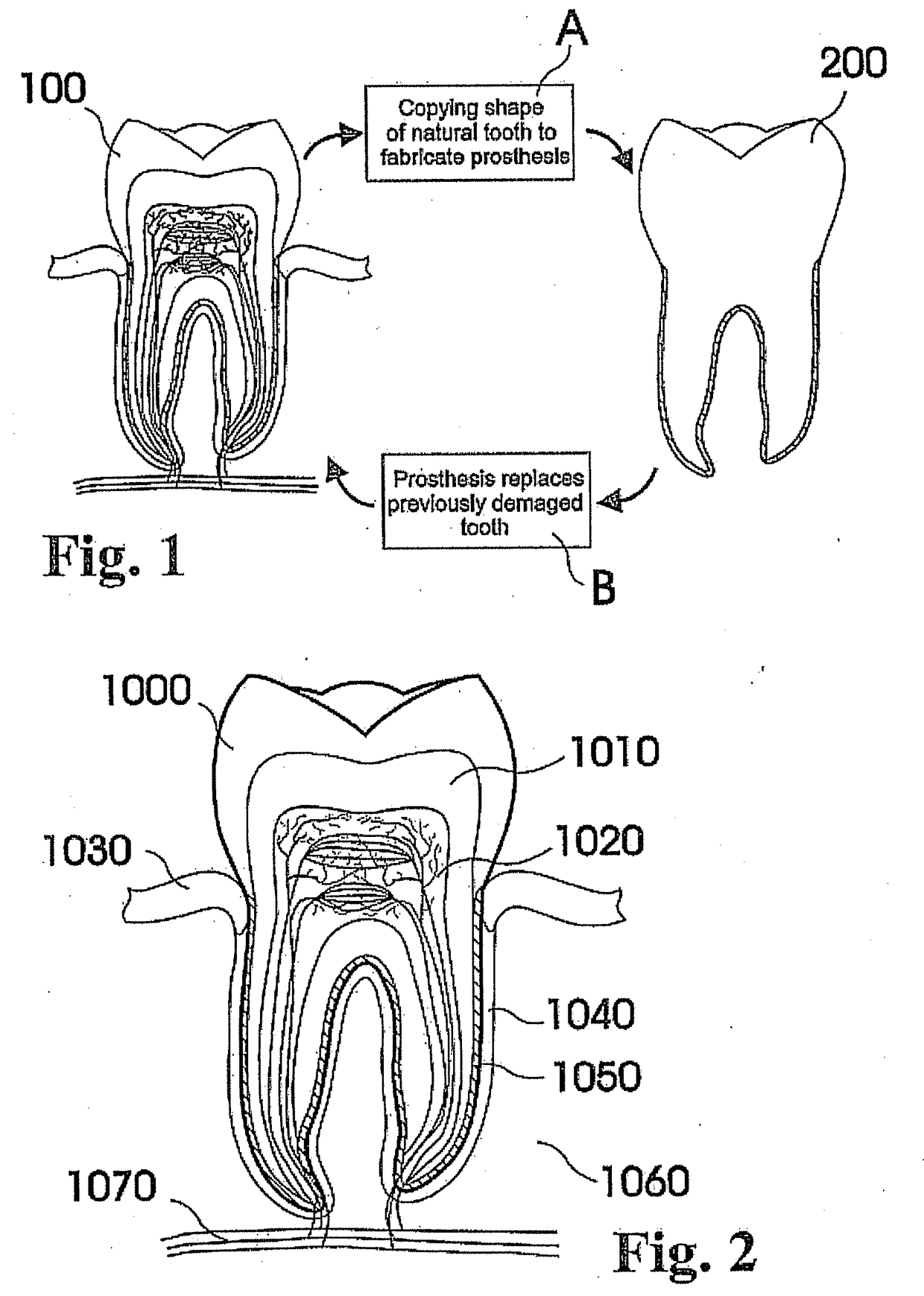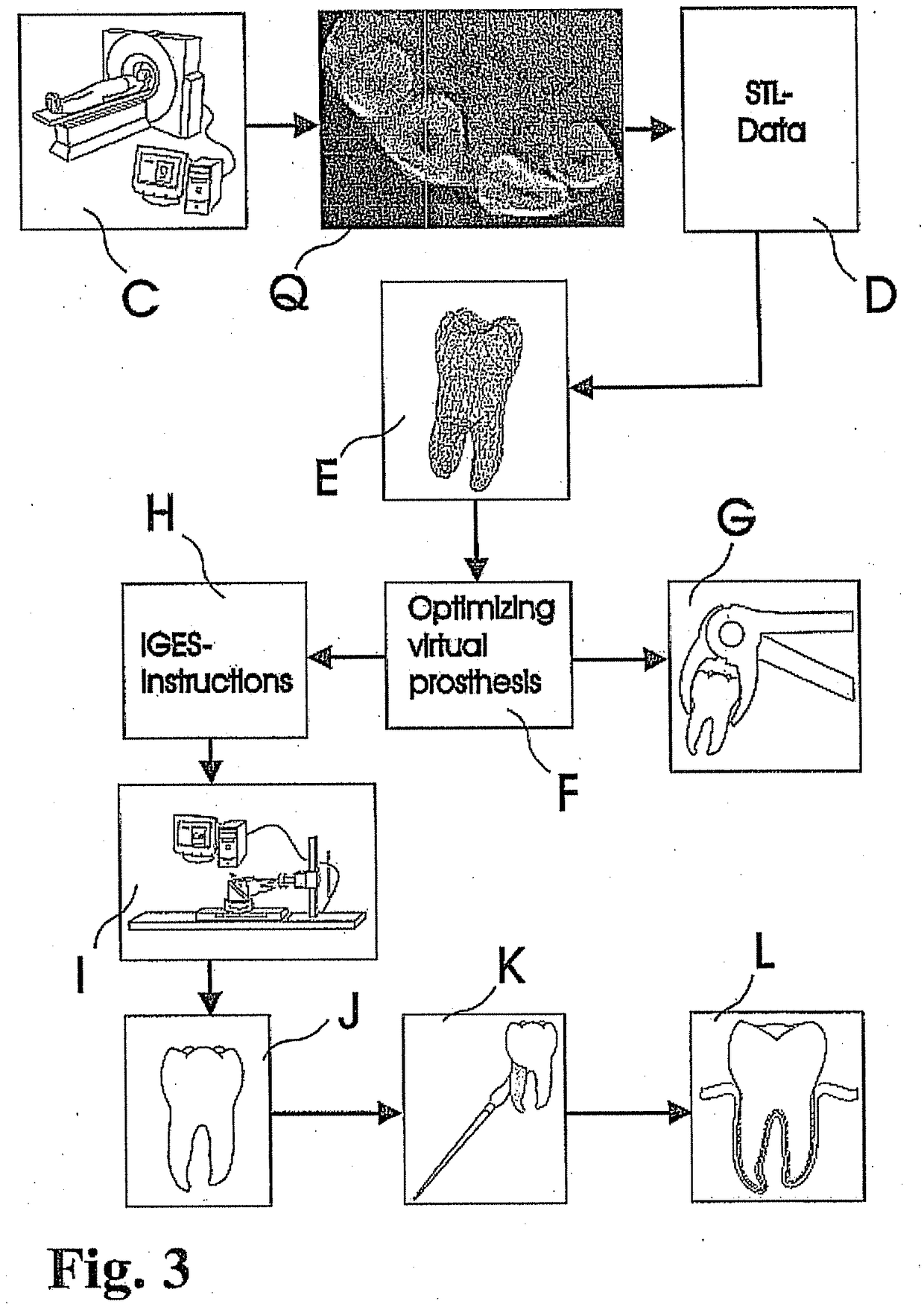Customized Dental Prosthesis For Periodontal or Osseointegration and Related Systems
a technology of osseointegration and dental prosthesis, applied in the field of dental prosthesis, can solve the problems of affecting the normal life of all the aforementioned restorative and prosthetic options, affecting the normal life of the osseointegrated implants, and achieving the effect of favorable primacy stability
- Summary
- Abstract
- Description
- Claims
- Application Information
AI Technical Summary
Benefits of technology
Problems solved by technology
Method used
Image
Examples
Embodiment Construction
[0159]The present invention will now be described more fully hereinafter with reference to the accompanying drawings, which illustrate embodiments of the invention. The invention may, however, be embodied in many different forms and should not be construed as limited to the illustrated embodiments set forth herein. Rather, these embodiments are provided so that this disclosure will be thorough and complete, and will fully convey the scope of the invention to those skilled in the art. Like numbers refer to like elements throughout. Prime notation, if used, indicates similar elements in alternative embodiments.
[0160]Current methods for replacing damaged teeth have several disadvantages. For example, conventional bridge implants require healthy teeth to be ground, and osseointegrated implants are drastically invasive. Additionally, these prostheses have a limited average lifetime. Removable dentures (800) as shown in FIG. 28 are certainly the final prosthetic option. An object of the i...
PUM
| Property | Measurement | Unit |
|---|---|---|
| wavelength | aaaaa | aaaaa |
| size | aaaaa | aaaaa |
| grain size | aaaaa | aaaaa |
Abstract
Description
Claims
Application Information
 Login to View More
Login to View More - R&D
- Intellectual Property
- Life Sciences
- Materials
- Tech Scout
- Unparalleled Data Quality
- Higher Quality Content
- 60% Fewer Hallucinations
Browse by: Latest US Patents, China's latest patents, Technical Efficacy Thesaurus, Application Domain, Technology Topic, Popular Technical Reports.
© 2025 PatSnap. All rights reserved.Legal|Privacy policy|Modern Slavery Act Transparency Statement|Sitemap|About US| Contact US: help@patsnap.com



